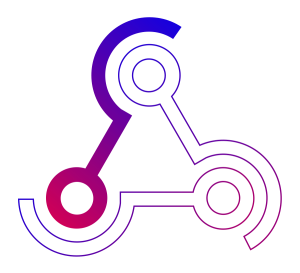Webhook Integration - mekya/antmedia-doc GitHub Wiki
Ant Media Server provides webhooks for making your system/app know when certain events occurs on the server. Therefore, you can register your URL to Ant Media Server which makes POST request when a live stream is started, finished or recorded. Firstly, let's look at how to register your backend URL to Ant Media Server as a webhook. After that, we'll provide reference for webhooks.
 You can add default webhook URL to your streaming app on Ant Media Server. In addition, it lets you add custom specific webhook URL's in creating broadcast.
In order to add default URL, just follow the steps below
You can add default webhook URL to your streaming app on Ant Media Server. In addition, it lets you add custom specific webhook URL's in creating broadcast.
In order to add default URL, just follow the steps below
- Open your apps red5-web.properties and add settings.listenerHookURL property to that file. red5-web.properties file is under webapps/<app_name>/WEB-INF folder
... settings.listenerHookURL=http://www.example.com/webhook/ ...
- Open your apps red5-web.xml file and add settings.listenerHookURL to the app.settings bean.
... <bean id="app.settings" class="io.antmedia.AppSettings"> ... <property name="listenerHookURL" value="${settings.listenerHookURL}" /> ... </bean> ...
- Restart the server on command line
sudo service antmedia restart
As a result, you can set listenerHookURL for creating stream at Ant Media Server.
Here is a sample JSON for using createBroadcast method with Postman
{
"variables": [],
"info": {
"name": "samples",
"_postman_id": "cbef37ab-d4ae-c349-4845-b4a91d1ab201",
"description": "",
"schema": "https://schema.getpostman.com/json/collection/v2.0.0/collection.json"
},
"item": [
{
"name": "http://localhost:5080/LiveApp/rest/broadcast/create",
"request": {
"url": "http://localhost:5080/LiveApp/rest/broadcast/create",
"method": "POST",
"header": [
{
"key": "Content-Type",
"value": "application/json",
"description": ""
}
],
"body": {
"mode": "raw",
"raw": "{\"name\":\"test_video\", \"listenerHookURL\":\"http://www.example.com/webhook\"}"
},
"description": "ListenerHookURL sample"
},
"response": []
}
]
}It's time to know when Ant Media Server calls webhooks with which parameters. Here is a simple list for that
-
liveStreamStarted: Ant Media server calls this hook when a new live stream is started. It sends POST (application/x-www-form-urlencoded) request to URL with following variables
- id: stream id of the broadcast
- action: "liveStreamStarted"
- streamName: stream name of the broadcast. It can be null.
- category: stream category of the broadcast. It can be null.
-
liveStreamEnded: Ant Media Server calls this hook when a live stream is ended. It sends POST(application/x-www-form-urlencoded) request to URL with following variables.
- id: stream id of the broadcast
- action: "liveStreamEnded"
- streamName: stream name of the broadcast. It can be null.
- category: stream category of the broadcast. It can be null.
-
vodReady: Ant Media Server calls this hook when the recording of the live stream is ended. It sends POST(application/x-www-form-urlencoded) request to URL with following variables.
- id: stream id of the broadcast
- action: "vodReady"
- vodName: vod file name
- vodId: vod id in the datastore
That's all. As a result, you can take some custom actions according to your project by checking action variable in your backend URL.
We hope this post will help you to make automation in your project. Please keep in touch if you have any question. We will be happy if we can help you.
Attention: Please process the result in your backend URL as soon as possible because these callbacks is called in event loop threads that does not support long running operations.